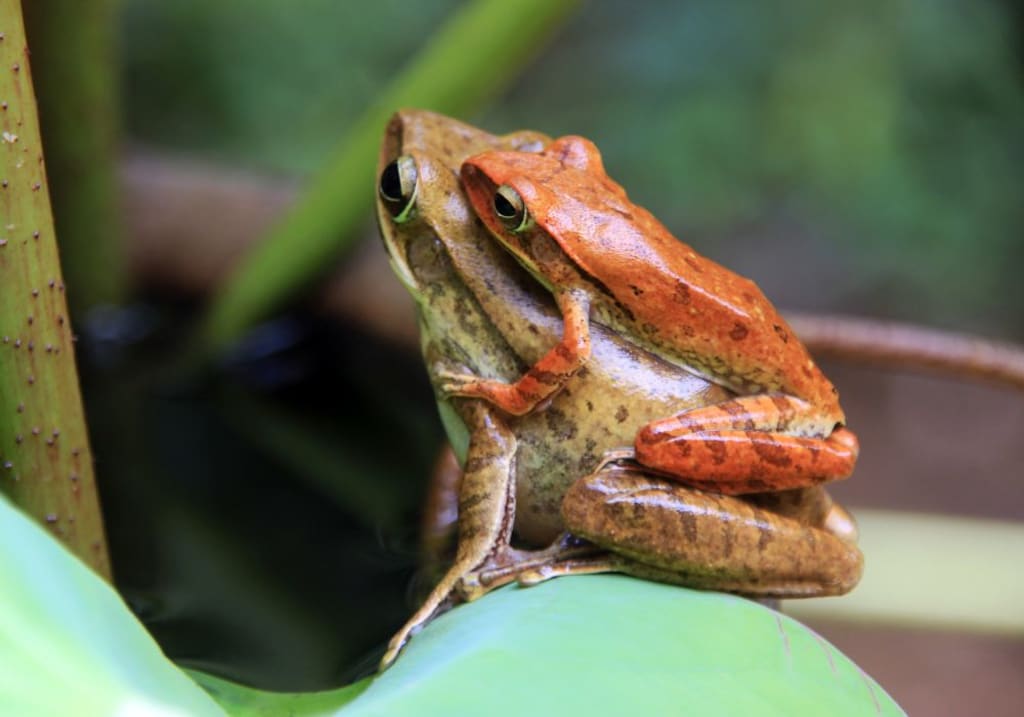
Frogs make fascinating and rewarding pets, but breeding them successfully in captivity can be a real challenge. Whether you're a seasoned frog enthusiast or just starting out, this guide will provide you with the essential tips and techniques to breed your pet frogs effectively.
Understanding Frog Breeding Behavior
Frogs have a diverse range of breeding behaviors, and understanding the specific needs of your species is crucial for successful breeding. Some key factors to consider include:
Seasonal Cues
Many frog species rely on seasonal cues, such as changes in temperature, rainfall, and day length, to trigger their breeding cycles. Mimicking these natural cycles in your captive environment is essential for inducing breeding.
Courtship and Amplexus
During the breeding season, male frogs will often engage in elaborate courtship displays, using vocalizations and physical gestures to attract females. Once a female is receptive, the male will grasp her in a mating embrace known as amplexus, where he fertilizes the eggs as she lays them.
Egg-Laying and Parental Care
Frog species exhibit a wide range of egg-laying and parental care behaviors. Some species lay their eggs in water, while others deposit them on land or even carry them on their backs. Understanding the specific needs of your frog species is crucial for providing the right environment for egg-laying and ensuring the survival of the offspring.
Preparing for Breeding
Before attempting to breed your pet frogs, it's essential to ensure that your captive environment is suitable and that your frogs are in optimal health.
Housing and Environment
Provide a spacious, well-designed enclosure that mimics the natural habitat of your frog species. This may include features like water sources, hiding spots, and appropriate substrate. Maintain proper temperature, humidity, and lighting to replicate the seasonal changes your frogs would experience in the wild.
Nutrition and Health
Feed your frogs a varied, nutritious diet to ensure they are in peak condition for breeding. Supplement their food with vitamins and minerals as needed. Regular veterinary check-ups can also help identify and address any health issues that may impact breeding success.
Conditioning for Breeding
Some frog species may require specific environmental cues or "conditioning" to trigger their breeding instincts. This may involve simulating a "rainy season" or gradually lowering and raising the water level in their enclosure. Consult with experienced breeders or veterinarians to determine the best approach for your species.
Inducing and Monitoring Breeding
Once your frogs are ready, you can begin the process of inducing breeding. This may involve a combination of environmental manipulation and the use of hormonal treatments.
Environmental Triggers
Adjust the temperature, humidity, and lighting in your frog's enclosure to mimic the seasonal changes they would experience in the wild. This can help stimulate their breeding instincts.
Hormonal Induction
In some cases, the use of hormonal treatments, such as gonadotropin-releasing hormone (GnRH) or human chorionic gonadotropin (hCG), can be used to induce breeding. Consult with a veterinarian experienced in amphibian reproduction before attempting this approach.
Monitoring and Intervention
Closely monitor your frogs during the breeding process, observing for signs of successful mating, egg-laying, and parental care. Be prepared to intervene if necessary, such as removing eggs for artificial incubation or providing supplemental care for the offspring.
Caring for Frog Eggs and Tadpoles
Once your frogs have successfully mated and laid their eggs, the next challenge is ensuring the survival of the offspring.
Egg Incubation
Depending on the species, frog eggs may require specific incubation conditions, such as temperature, humidity, and water quality. Carefully monitor the eggs and be prepared to adjust the environment as needed.
Tadpole Rearing
Tadpoles have unique feeding and environmental requirements that differ from adult frogs. Provide a suitable aquatic habitat, appropriate food, and water quality management to support their development.
Metamorphosis and Juvenile Care
As the tadpoles undergo metamorphosis, transitioning from aquatic to terrestrial life, they will require specialized care and housing to ensure a successful transformation into juvenile frogs.
Challenges and Troubleshooting
Breeding frogs in captivity can be a complex and sometimes frustrating endeavor. Be prepared to face a variety of challenges and be ready to adapt your approach as needed.
Common Issues
Some common challenges include failure to breed, egg or tadpole mortality, and difficulties with the transition from tadpole to juvenile frog. Carefully monitor your frogs and their environment, and be prepared to consult with experienced breeders or veterinarians for guidance.
Troubleshooting Strategies
If you encounter issues, carefully review your husbandry practices, environmental conditions, and nutrition. Make adjustments as needed, and be patient – successful breeding can take time and multiple attempts.
Conclusion
Breeding pet frogs can be a rewarding and fascinating experience, but it requires a deep understanding of frog biology, behavior, and captive care. By following the tips and techniques outlined in this guide, you'll be well on your way to successfully breeding your pet frogs and contributing to the conservation of these amazing amphibians.
Remember, every frog species has unique needs, so be sure to research the specific requirements of your pet frogs and consult with experts as needed. With dedication, patience, and a bit of trial and error, you can become a successful frog breeder and enjoy the joy of watching your captive-bred frogs thrive.
About the Creator
Hasan
Welcome...
In this site of mine you can learn amazing things and many information that you don't know so please subscribe to my site.
Enjoyed the story? Support the Creator.
Subscribe for free to receive all their stories in your feed. You could also pledge your support or give them a one-off tip, letting them know you appreciate their work.






Comments
There are no comments for this story
Be the first to respond and start the conversation.